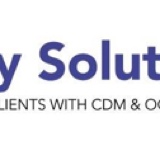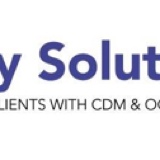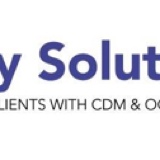Information
-
Audit Title
-
Document No.
-
Client / Site
-
Conducted on
-
Prepared by
-
Location
-
Personnel
Previous Audit Report
-
Has the previous audit report been closed out?
Site Documentation
-
Ensure the Construction Phase Plan is on site and up to date.
-
Is the plan meaningful and communicated to all parties, including sub contractors?
-
Is an emergency plan defined and in place complete with emergency contact numbers?
-
Are responsibilities defined?
-
Is a signed copy of the Project Notification Form 10 been sent to the local HSE office and a copy displayed on site (only applicable for projects lasting 30 days or more, or consisting of 500 man days).
-
Is there a current induction register on site and up to date?
-
Have individual induction sheets been completed with the inductee signing as an understanding of site rules and requirements?
-
Is there a site signing in register on site and is it up to date?
-
Is there a PUWER register held on site?
-
is there a access scaffold register on site and is it completed with 7 day inspections?
-
Check employers and public liability insurance certificates are valid and on display.
-
Is there evidence of portable appliance testing on site?
-
Is there the appropriate test certification for hired equipment held on site?
-
Ensure site safety rules are displayed in a prominent position e.g. reception, canteen, site office etc.
-
Ensure a new style Accident Book (which complies with the Data Protection Act) is provided on site and is available to all personnel
-
Are operative training records up to date and held on site?
Site Set up
-
Are the following items displayed?
-
Latest H&S Policy?
-
Employers and Public Liability Insurance Policy?
-
Fire Plan?
-
Emergency plan and contacts?
-
Accident reporting process?
-
Site registration under the Hazardous Waste Regulations?
-
Health & Safety Law poster (what you should know)?
-
Is the site set up in accordance with CDM and Company requirements?
-
Has appropriate signage been display?
-
Has external site boundary signage been out in place?
-
Have fire escape routes been clearly identified?
-
Has drinking water / non drinking water signage been displayed?
-
Have fire assembly point signs been erected?
-
Have first aid location signs been erected?
-
Has asbestos presence signage been displayed?
Management Controls
-
Ensure adequate supervision is provided for all activities on the site paying particular attention to work activities as undertaken by young persons and/or those which are high risk activities.
-
Have appropriate signs/notices been erected around the site i.e. mandatory use of PPE, fire assembly, first aid point etc.
-
Ensure that all persons are familiar with the requirements of the site safety rules and that they are complied with on site.
-
Ensure all contractors have been provided with information relating to Health & Safety for the work they are undertaking.
-
Ensure adequate supervision is provided for all activities on the site paying particular attention to work activities as undertaken by young persons and/or those which are high risk activities.
-
Ensure all subcontractors have been assessed and are adequately resourced and competent for the work they are undertaking.
-
Ensure operatives CSCS/SKILL cards/registration are appropriate for the work being undertaken
Access and Egress
-
Is there safe access and egress to all working areas of the site?
-
Have pedestrian walkways been provided to protect from construction activities?
-
Are walkways free from obstructions and stored materials?
-
Are access routes adequatelly lit?
Asbestos Management
-
Has an asbestos survey been carried out in accordance with HSG264?
-
Have the results of the survey been communicated to relevant parties?
-
Are certificates of re-occupancy in place?
-
Are emergency procedures in place for inadvertent exposure?
-
Is the presence of asbestos included in the site induction?
Cartridge Operated Tools
-
Has the operator/s been properly trained?
-
Is the operator/s wearing eye protection?
-
Are the gun cartridges keep secure when not in use?
Consultation
-
Has a system been established for employees to comment and be consulted on health, safety and welfare issues.
-
Is there a site suggestion box?
-
Are minutes and actions from meeting available and published on site?
-
Ensure appropriate Tool Box Talks are given to all employees and that the Tool Box Talks are appropriate and relevant to the work being undertaken.
-
Ensure that an attendance register has been maintained and signed by all persons present at each Tool Box Talk.
Control of Substances Hazardous to Health (COSHH)
-
Have COSHH assessments been carried out for all potentially hazardous materials and substances being used on the site.
-
Are material safety data sheets available to assist with COSHH assessments.
-
Have the hazards associated with the use of such materials been properly communicated to those affected.
-
Ensure all dangerous/hazardous materials/substances are clearly marked/identified and stored in a secure location appropriate to the substance.
-
Have the appropriate control systems and PPE been provided and is the PPE being used.
Electrical Equipment
-
Check that low voltage tools and equipment are being used wherever possible.
-
Check that cables and leads are protected from damage.
-
Check that tools and equipment are visually checked and regularly inspected/tested by a competent person. (PAT)
-
Ensure that cables and trailing leads are not trip hazards.
-
Ensure that suitable and sufficient task lighting is provided to enable operatives to safely carry out their work.
Fire Risks and Management
-
Is there a fire risk assessment in place?
-
Ensure there are emergency procedures for evacuating the site in case of a fire, explosion etc.
-
Ensure all staff know what these procedures are and that they form part of the site induction.
-
Check that there is an adequate means of raising the alarm, and that it is regularly tested.
-
Ensure that there are adequate escape routes and that these are kept clear of obstructions.
-
Ensure that the quantity of flammable materials, liquids and gases are kept to a minimum and are adequately stored.
-
Ensure that smoking and other ignition sources are banned in areas where gases or flammable liquids are stored or used.
-
Check that flammable and combustible waste is removed regularly and stored in suitable bins and skips.
-
Check that suitable fire extinguishers are provided and that they are maintained and in a good condition.
-
Check that all fire extinguishers have had an annual inspection.
-
Do all temporary coverings comply with LPS1207?
First Aid
-
An appropriate number of trained and qualified first aiders should be available on the site.
-
Check the number of first aiders required, this is dependent on the type of work or operations, the number of workers on site and any special or unusual hazards.
-
Are the names of all first aiders detailed on the site notice board?
-
All first aiders should be clearly identified on site through the use of an appropriate helmet sticker.
-
Ensure the first aid kit contains only first aid materials.
-
The location of the first aid box should be indicated on the site notice board.
-
Signs directing persons to the site of the first aid book should also be provided.
-
The First Aid box should be;
-
Marked with a white cross on a green background.
-
Be placed where it can be seen and used.
-
Be checked and replenished on a regular basis.
-
Are new staff made aware of its location as part of their induction?
-
Has eye wash bottles been provided?
Housekeeping
-
Ensure debris is not be allowed to collect around the site.
-
Ensure staff adopt the philosophy of 'A tidy site is a safe site'.
-
Ensure materials are stored in an appropriate manner.
-
Are damaged materials segregate to prevent them being used?
-
Are materials appropriately stacked/stored to prevent accidental movement?
-
Ensure all waste receptacles are are appropriately signed for their intended contents.
Lifting Operations/Equipment
-
Ensure a (competent) Appointed Person co-ordinates all lifting operations.
-
Have all lifting operation got a valid lifting plan?
Lone Working / Out of hours working
-
Is the work defined as low risk?
-
Is there a risk assessment for lone working?
-
Is access to first aid, welfare facilities and emergency services available to the worker/s?
Low Level Access Including Steps and Podiums
-
Are podiums used before steps are allowed?
-
Are operators trained in the use of podiums?
-
Are podiums maintained and inspected regularly?
-
Are podiums free from defects?
-
Are steps class 1 as defined in EN131?
-
Is there a risk assessment in place for the use of steps?
-
Is a permit system in place?
Manual Handling
-
Ensure that a manual handling risk assessment has been completed wherever regular lifting of heavy loads is required.
-
Ensure operatives where applicable have received manual training.
Mobile Scaffold Towers
-
Check that tower scaffolds have been erected and inspected by trained (PASMA) operatives and are being used in accordance with the suppliers instructions.
-
Check that the wheels of any tower scaffold have been locked when in use and check that the platform is empty when being moved.
-
Are they tagged safe for use?
Occupational Health, HAV'S, Noise and Associated Health Risks
-
Check that workers have had information and training so that they know what the risks are from HAV.
-
Ensure that workers have had training so they are aware of the risks from noise on site and what they need to do to avoid these risks.
Permits to Work
-
Hot Works - Hot Works include welding, use of angle grinders/metal saws etc.
-
Ensure all Hot Works Permits have been checked and reviewed and are valid for the work conditions.
-
Ensure suitable and sufficient fire prevention measures are in place, including the removal of all combustible materials, and access to a fire blanket or fire extinguishers are to hand.
-
Ensure old permits have been cancelled and closed.
Personal Protective Equipment (PPE)
-
PPE General Requirements - Ensure PPE compatibility issues have been considered and that one piece of PPE not restrict the effectiveness of another piece of PPE.
-
Ensure that PPE is issued on an individual basis.
-
Ensure that it is suitable for the type of work being undertaken.
-
Check that it is kept in good condition.
-
Ensure that it is appropriately replaced.
-
Eye Protection
-
Ensure that it is of a suitable grade for the type of work being undertaken. i.e. light protection or full goggle etc.
-
Check that it is kept in good condition.
-
Foot Protection
-
Ensure that footwear is fitted with steel toecaps and steel sole plates.
-
Hand Protection - Ensure that where damaged to the hands may occur through activities such as handling, or when using hazardous substances/chemicals that all persons affected wear the appropriate class of safety glove.
-
Are all gloves free from damage?
-
Ensure gloves are correct for their application and the activity being undertaken.
-
Check the availability of barrier creams and skin cleansers.
-
Hearing Protection
-
Ensure the correct type of protection is in use for the task.
-
Ensure that hearing protection is used as instructed.
-
Ensure that hearing protection is kept clean and checked regularly for damage.
-
Respiratory Protection (RPE)
-
Ensure that the correct type of respiratory equipment is used for the works being undertaken.
-
Ensure that all equipment is cleaned and checked before use.
-
Safety Helmets
-
Ensure all operatives and visitors have access to a safety helmet where appropriate.
-
Were helmets found free from damage?
-
Ensure helmets are worn correctly.
-
Were helmets within their expiry date - helmets should be changed every 2-3 years.
Plant & Equipment
-
Ensure that tools and equipments are stored correctly to avoid damage to the equipment and persons.
-
Hand tools
-
Ensure that the right tools and equipment are being used for the right job.
-
Were all hand tools found to be in good condition with no defects?
-
Power Tools
-
Ensure operatives have been trained to use the tools/equipment they are using.
-
Check that guards are secure and in good repair.
-
Ensure that the tools are in a good state of repair and carries appropriate safety symbol e.g. BS kite mark, CE Mark etc.
-
Check that safety devices are operating properly and that all cables are double insulated.
-
Check that tools are 110 volt and that a residual current device (RCD) is used for additional protection.
Risk Assessments and Method Statements (RAMS)
-
Ensure all RAMS have been prepared by a competent person and have been checked, reviewed and signed.
-
Are RAMS adequate and suitable for the task?
-
Do the RAMS offer the necessary controls and required level of protection?
-
Ensure all contractors are working in accordance with their RAMS.
Scaffolding/Working platforms
-
Check that any scaffold erection, alteration or dismantling is carried out by a competent person.
-
Check that all standards are provided with base plates and timber sole boards which span at least two base plates.
-
Check that all standards, ledgers, braces and struts are in position.
-
Ensure that the scaffold is adequately tied to the building or structure to prevent collapse.
-
Check that double guard rails and toe boards or other suitable protection at every edge.
-
Check that there are additional brick guards provided to prevent materials falling from scaffold where they are used as a working platform.
-
Check that working platforms are fully boarded and that the boards are arranged to avoid tipping or tripping - i.e.: no overlapping boards.
-
Do all ladder accesses have self closing gates fitted?
-
Ensure that there are effective warning notices in place to stop any person using an incomplete scaffold.
-
Check that the scaffold is strong enough to carry the weight of materials stored on it and that they are evenly distributed.
-
Ensure that the scaffold has been properly maintained.
-
Ensure that a competent person inspects the scaffold regularly, at least every 7 days, and always after it has been altered, damaged and following extreme weather.
-
Are scaffold tags being utilised?
-
Ensure that these inspections are adequately recorded, with a writing report provided within 24 hours.
Security
-
Are the general public segregated and protected from construction works?
-
Is out of hours security is place?
-
Are site security arrangements adequate?
-
Is appropriate security signage displayed?
Storage of Substances and Chemicals.
-
Are substances and chemicals stored in the correct manner?
-
Is equipment in good order and free from leaks etc?
Training and Skill Cards
-
Are all persons trained for their respective tasks?
-
Are Skill Cards available for inspection?
Waste Management
-
Is a waste management plan in place and sutable?
-
Ensure the plan is signed by all including the client/client representative?
-
Is the plan being maintained?
-
Is it being reviewed on a regular basis?
-
Is the hierarchy of waste control being applied on site - are operatives aware of the disposal process?
-
Are bins clearly labelled?
-
Are all waste carries and transfer stations records available?
-
Are waste transfer notes available and correctly filled in?
-
Is the process communicated via induction?
Site Welfare Facilities
-
Mess facilities should include a place where workers can sit, make hot drinks and prepare food.
-
Ensure a supply of wholesome drinking water and cups are provided.
-
Ensure that all drinking water supplies are appropriately signed.
-
Ensure sufficient toilets are readily available and maintained.
-
Ensure there are washbasins, hot and cold running water, soap and towels.<br>
-
Are welfare facilities cleaned on a daily basis?
Working at Height
-
Check whether the work can be undertaken without working at height.
-
Check that access equipment is erected by competent persons and checked before use.
-
Ensure safe access and egress have been provided to areas.
-
Roof Work
-
Ensure that edge protection is provided to stop people or materials falling.
-
Ensure that precautions have been taken to stop people falling through fragile materials when working on roofs, e.g. by providing barriers, covers or working platforms.
-
Ensure roof ladders are used in accordance with best practice requirements.
-
Ensure that people are kept away from areas below the roof work.
-
Ensure that ladders are in good condition, are not split, warped or have damaged rungs etc.
-
Check whether ladders are suitable for the purpose - only for short term work or for gaining access to another area.
-
Check that ladders are secured to prevent them slipping sideways or backwards.
-
Check that ladders rise a sufficient height above their landing place (approx. 1m or 5 rungs).
-
Safe landing platforms to be provided where a ladder rises to a height of 9m or more.
Other
-
The following additional observation has been recorded.
-
The following additional observation has been recorded.
-
The following additional observation has been recorded.
Summary
Audit Risk Level
-
Risk rating for this Audit.
Corrective Actions
Sign off
-
I confirm I have had the contents of this audit report explained to me.
-
Site Manager / Site Foreman
-
Person conducting this Audit.
-
Audit concluded at:
Closure
-
All actions on this report have been completed on:








